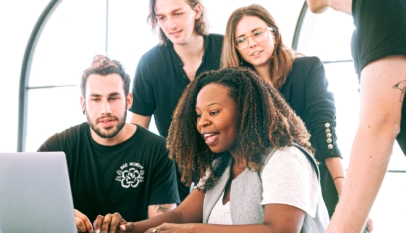In order to thrive in today’s business world, companies are always looking for ways to enhance their processes and overall efficiency. There are several continuous improvement methodologies available, including PDCA, DMAIC, A3, and 8D, which are among the most commonly used approaches. Although each methodology has its own advantages and steps, it can be difficult to determine which one is best suited for your organization. To assist you in making a well-informed decision, this blog post provides a thorough comparison of these four methodologies by analyzing their steps and applications.
Comparison Table
| Methodology | Steps | Description |
|---|---|---|
| PDCA | Plan, Do, Check, Act | An eight-step problem-solving methodology is used for finding and eliminating root causes of problems, especially in manufacturing and engineering. |
| DMAIC | Define, Measure, Analyze, Improve, Control | A systematic, data-driven approach to process improvement, focusing on reducing variation and increasing stability. |
| A3 | Background, Current Condition, Goals, Root Cause Analysis, Proposed Countermeasures, Plan, Follow-up | A structured problem-solving method using a single-sheet report to visualize the problem, analysis, and solutions. |
| 8D | D0: Prepare, D1: Problem Description, D2: Containment Actions, D3: Root Cause Analysis, D4: Root Cause Verification, D5: Corrective Actions, D6: Implement Corrective Actions, D7: Prevent Recurrence, D8: Congratulate the Team | An eight-step problem-solving methodology used for finding and eliminating root causes of problems, especially in manufacturing and engineering. |
PDCA (Plan-Do-Check-Act)
PDCA, or the Deming Cycle or Shewhart Cycle, is a cyclical and iterative approach to problem-solving and continuous improvement. The four steps involve planning the change or improvement (Plan), implementing the change (Do), analyzing the results (Check), and taking corrective actions (Act) based on the analysis. PDCA is widely applicable to various industries and is especially useful when quick improvements are desired.
Sources:
- Deming, W. E. (1986). Out of the Crisis. MIT Press.
- Shewhart, W. A. (1939). Statistical Method from the Viewpoint of Quality Control. Dover Publications.
DMAIC (Define-Measure-Analyze-Improve-Control)
DMAIC is a data-driven methodology used primarily in Six Sigma projects. It is a systematic approach to process improvement, focusing on reducing variation and increasing stability. The five steps include defining the problem (Define), measuring the current process performance (Measure), analyzing the data to identify root causes (Analyze), implementing improvements (Improve), and maintaining the gains through control measures (Control). DMAIC is best suited for organizations seeking a structured and data-driven approach to continuous improvement.
Sources:
- George, M. L., Rowlands, D., & Kastle, B. (2004). What is Lean Six Sigma? McGraw-Hill Education.
- Pande, P. S., Neuman, R. P., & Cavanagh, R. R. (2000). The Six Sigma Way. McGraw-Hill Education.
A3
The A3 methodology is a structured problem-solving approach that originated in Toyota Motor Corporation. It uses a single-sheet report (A3-sized paper) to visualize the problem, the analysis, and the proposed solutions. The seven steps include background information, current condition, goals, root cause analysis, proposed countermeasures, the plan for implementation, and follow-up. A3 is suitable for organizations seeking a visual and lean problem-solving approach.
Sources:
- Sobek, D. K., & Smalley, A. (2008). Understanding A3 Thinking: A Critical Component of Toyota’s PDCA Management System. CRC Press.
- 2. Rother, M. (2010). Toyota Kata: Managing People for Improvement, Adaptiveness and Superior Results. McGraw-Hill Education.
8D (Eight Disciplines)
8D is an eight-step problem-solving methodology used primarily for finding and eliminating root causes of problems, especially in manufacturing and engineering. Developed by Ford Motor Company, 8D emphasizes teamwork and structured problem-solving. The eight steps include preparing for the process (D0), problem description (D1), containment actions (D2), root cause analysis (D3), root cause verification (D4), corrective actions (D5), implementing corrective actions (D6), preventing recurrence (D7), and congratulating the team (D8). 8D is most suitable for organizations that require a systematic and team-based approach to solving complex problems.
Sources:
- Ford Motor Company (1996). Global 8D – Eight Disciplines of Problem-Solving. Ford Motor Company.
- Dyadem Press (2003). The Eight Disciplines for Root Cause Analysis: Ten Hours to Better Problem-Solving. Dyadem Press.
PDCA, DMAIC, A3, and 8D are all effective continuous improvement methodologies, but their suitability for your organization depends on factors such as industry, problem complexity, and desired outcomes. PDCA is ideal for quick improvements, while DMAIC is recommended for data-driven process improvements. A3 is a visual and lean problem-solving approach, while 8D is best suited for team-based, complex problem-solving. Understanding the strengths and steps of each methodology can help you make the right decision for your organization’s continuous improvement journey.



















Excelente tus comentarios sobre el uso de estas Metodología.
saludos